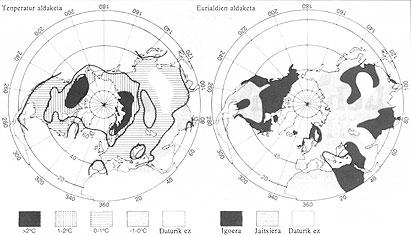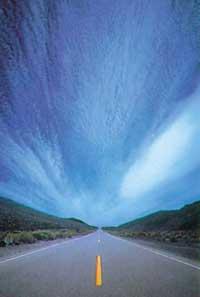Climate change: responsibility of all
1995/05/01 Nuñez-Betelu, Koldo Iturria: Elhuyar aldizkaria
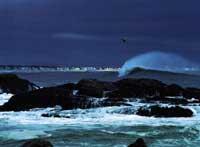
Climate change is an issue that is often debated between friends and the media. Many believe that the Basque Country has already been “tropicalized” and that winters are not winter, that in youth we saw snow more often in our streets and things like that are heard. This is said in most parts of the world, but nevertheless, there are scientists who question that we are already facing climate change. However, according to many studies, temperatures in both the atmosphere and the oceans have increased in recent years.
However, as climates have always had fluctuations, these temperature rises could be normal. More data and research are still needed to know if the climates of our planet are really changing. However, many scientists consider that the human influence on the atmosphere is very evident and that among the possible changes is the greenhouse effect. On the other hand, the greenhouse effect would cause a warming of the climates.
However, for many reasons, climates have undergone continuous changes. For example, in the last two million years, along the Holocene, there have been several glaciations in the world, the last ending about ten thousand years ago. Then in Aralar, Aizkorri, Anboto and other mountains of Euskal Herria there were glaciers, with a few degrees of colder average temperature in Euskal Herria.
At that time the sea level was lower, so the coast was a little further away. After the last glaciation the climate was temperate and 5,000 years ago it became more temperate than the current one. However, and although the climate has been temperate since the last glaciation, significant natural fluctuations have occurred for centuries. So, to know if the weather is changing it takes many years.
Consequences of climate warming
Despite the need for deeper and longer research, some mathematical models conclude that climate warming has been caused by human action and that warming has accelerated. This warming can lead to deep climate changes, with very harmful consequences for humans. From a mathematical model widely used among scientists it is concluded that in the coming years the average summer temperatures can increase between 2 and 4 ° C.
The warmer climates, among many other changes, would mean the melting of the ice of the high latitudes and mountains, along with the rise of sea level, which would flood several cities and populated coasts. This would cause large population migrations, in addition to immense political and economic problems. The melting of ice hats and glaciers would lead to a decrease in the albedo of the Earth's surface and subsequent warming of the Earth's surface.
Climate warming can also cause the spread of many tropical diseases, as insects that contaminate these diseases would expand greatly with heat. Thus, diseases such as malaria, schistosomiasis, filariasis, yellow fever, etc., would act violently in tropical countries and spread to many parts of the world that are currently free of these diseases. Likewise, mathematical models foresee “heat waves” and “cold waves”, terrible typhoons and hurricanes, violent droughts and rains and other meteorological phenomena that would cause rapid climate change in human activities. All this can happen and may have already begun to happen.
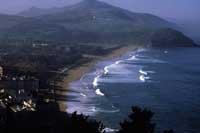
But there are, at least for some, improvements that could result from warmer climates. Thus, territories that today will suffer from climate warming, such as northern Canada and Siberia, can be used for agriculture. Unfortunately, indigenous soils have very little development and would not be productive at all. On the other hand, by melting the permafrost of these regions, methane would be emitted in large quantities into the atmosphere, remembering that methane is a very powerful greenhouse gas.
Moreover, the regions discovered by the glacier would become deserts, since there is no biological soil, and its evolution would require both hundreds and thousands of years. In a natural climate change it is usually possible to form soils in regions previously covered by ice, since climate change is not very fast, but climate change caused by humans can be very fast, so there would be no time to adapt.
Atmosphere and climate change
The cause of climate change lies both in astronomy and geology, and has always occurred without human influence. But the growth of the world population, coupled with the evolution of new technologies, makes humans increasingly emit our environment, the atmosphere. Both organic and inorganic activities cause the emission of gases into the atmosphere. However, until recently the atmosphere has been able to maintain a certain balance and the pouring to it was ironed by the atmosphere itself, with little variation in its composition or with small variations gradually.
The oceans, among many other compounds, absorb carbon dioxide in large quantities to form carbonates, thus cleaning the atmosphere. Through this settled carbon, reefs have always been built, accumulating sediments that will then become limestones and dolomites. However, the cleaning capacity of the atmosphere and oceans has its limits and if too much is poured into it, that capacity overflows. This abruptly breaks the balance until then and the consequences are difficult to predict.
Accumulation of greenhouse gases in the atmosphere
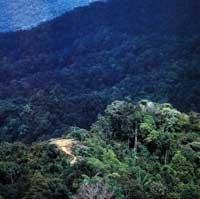
Some gases that maintain heat, called greenhouse gases, are naturally present in the atmosphere and thanks to them life on Earth is possible, otherwise its average temperature would be less than zero. In orogenic and volcanic activities, for example, carbon dioxide is released in large quantities that cause natural climate changes.
Therefore, if humans increase the concentration of greenhouse gases and have already risen, more heat will accumulate in the atmosphere and therefore we can change the climate. Thus, the Industrial Revolution involved the use of organic fuels by burning coal and hydrocarbons and, among many other greenhouse gases, releasing carbon dioxide into the atmosphere. Since then, the concentration of this gas in the atmosphere has increased considerably, 25% in the last 50 years, increasing at the end of this century.
Although no one denies that the concentration of greenhouse gases in the atmosphere has increased by the effect of human action, it may still be early to say that climate change is occurring by the effect of these gases, since, as mentioned above, the climate has always suffered natural variations. There are three positions between scientists and current authorities. On the one hand, those who believe that the climate is changing, on the other, those who ask to wait to know if the climate is really changing, and finally, those who believe that human activities will never change the climate.
The first and some of the second, of course, already propose to take measures to address climate change, but the rest requires waiting. Unfortunately, if the former are right and nothing is done, it can be too late for when we could be convinced all, with catastrophic consequences.
Changes in recent years
In the last twenty years the average air temperature has risen 0.7 degrees, the temperature of the seas has also been slightly tempered and the sea level rises at least one millimeter a year. In the same time we are meeting typhoons, hurricanes, “cold waves”, “heat waves”, droughts and rains more intense than ever, similar to those that have foreseen that climate models could occur through rapid climate change. Moreover, changes are already occurring in the high latitudes, and for example, the waters of the North Pole have been tempered by thinning the sea ice.
On the other hand, the Antarctic ocean ice platforms have begun to melt and fragment after thousands of years of freezing, freeing the iceberg as large as Alava recently. However, gases emitted into the atmosphere by humans not only heat the climate, but have other consequences. These consequences are not questioned, as is happening with climate change, because we are already going through and suffering. Among them, acid rain and ozone hole. Acid rain in industrialized countries, among other consequences, kills forests and reduces crops, causing significant economic and ecological damage.
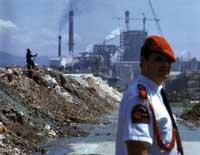
On the other hand, the ozone hole in the high latitudes of the Southern Hemisphere already appears every summer and has begun to expand also in the Arctic. From the ozone hole the ultraviolet rays of the sun reach the earth surface, causing cancers and genetic alterations. The Argentinian city of Usuaia, in Patagonia, is located every summer at the height of the ozone hole, so its inhabitants have had to take very specific protective measures to protect their health. Similar measures have been initiated in Australia and New Zealand, where the risk is increasing.
Measures to be taken
While we are not sure that climate change is occurring, it is better to take action, as once the situation occurs it can be very difficult or impossible. Climate is the result of a combination of many factors that depends on both the characteristics of the oceans and the atmosphere of our planet. Due to the great magnitude of this climate adaptation system, it has a great inertia, so once the changes occur it is very difficult to change course.
This year's June marks three years since several governments met in Rio de Janeiro to combat climate change. In it a series of decisions were made to preserve the environment, but when it comes to implementing it they have encountered great difficulties. The Berlin Meeting of 28 March this year was held with the aim of presenting concrete proposals in which several proposals were discussed. Thus, faced with possible climate change, Denmark and Germany want to reduce their carbon dioxide emissions by encouraging alternative energies.
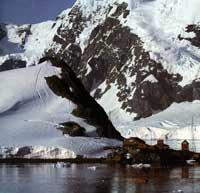
For its part, the United States, Great Britain and Japan aim to maintain the spill level, increasing in low percentages for both Spain and France. However, while developed countries are proposing to control spills, they are pushing for proposals not to reduce developing urban spills, as their economy may suffer if these measures are taken.
However, the problem of possible climate change is everyone's. Governments, for their responsibility, must make decisions without a doubt. But pedestrians can also take many steps to take care of the environment. Our daily work has a direct impact on the environment and we can choose to some extent the direction of those effects. We can consciously change our habits by adopting behaviors in harmony with the environment. Explosion motor transport, for example, pollutes a lot, so both collective transport and the more frequent use of bicycles and feet would allow us to take better care of the environment.
Otherwise, if we have to take the car we could drive ecologically, that is, use the “ecological speed” (90 km/h, in order to rationalize fuel consumption), perform slow accelerations or brakes, fill the car with people when possible (this way would reduce the circulation of cars), etc. On the other hand, our purchases can also be in solidarity with the environment and, among many other things, we can buy products that do not harm the ozone. Therefore, changing a little our comfortable lifestyle, we can also care for the environment and the Earth, and thus avoid climate change, because in the end it is the future of all who touch us.

Gai honi buruzko eduki gehiago
Elhuyarrek garatutako teknologia



